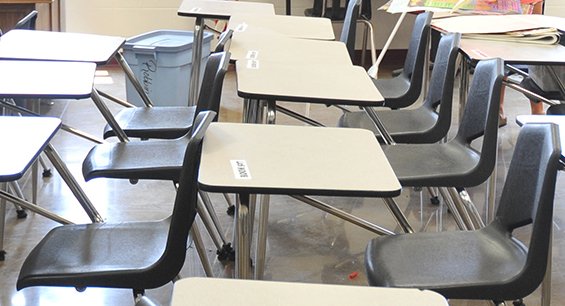More Arkansas students in special education programs were able to take ACT Aspire exams in 2018 rather than an alternative assessment -- putting the state in the "meets requirements" category in regard to the federal IDEA Act.
The state's newly announced meets-requirements ranking for fiscal 2018 is the highest possible category for the Part B section of the Individuals with Disabilities Education Act, said Matt Sewell, special education unit director at the Arkansas Division of Elementary and Secondary Education.
"This comes after six consecutive years of 'needs assistance' determinations," Sewell said about the state's previous ratings.
"This is another example of Arkansas leading the nation in student-focused education," he said.
Arkansas -- where more than 48,000 students receiving special education services took the Aspire tests in grades three through 10 -- is one of 21 states to now be classified as meeting the federal Part B requirements.
With increases in the numbers of Arkansas special education students who took the regular math and reading exams in fourth and eighth grades, the percentage of students in special education programs taking the alternate assessment declined.
The alternate assessment -- the Dynamic Learning Maps -- is reserved for students with the most significant cognitive disabilities.
Ideally, no more than 1% of students receiving special education services should be assigned to take the alternate exam, according to the federal law.
Arkansas' percentage of alternate assessment-takers, which has been as high as 1.32%, has dropped to 1.13%, Sewell said.
Six years ago, the federal office of Special Education and Rehabilitative Services changed the way it evaluated states, going from a compliance determination to the use of a compliance-and-results matrix, Sewell said in an interview. The results component of that matrix counts for 25% and the compliance piece counts for 75% of the state's score.
"We were able to improve in the area of results," he said. "That's the most exciting. Our points that we received -- that pushed us over into the 'meets requirements' -- were in the area of results. Then we also had improvement in compliance, but we have always done pretty well there."
He attributed the success to the work done together by the school districts and the state agency's special education unit.
"We've developed a stakeholder group, to bring them in and work on the criteria to be part of the 1 percent population. After taking that information from our stakeholder group and our state advisory panel, we then developed training and began going out with that."
He said districts are gaining a greater understanding of which students should and should not be taking the alternate assessment.
"We included the districts as we developed that criteria, which was very beneficial," he said. "And we got to see that our districts had very high expectations for their kids. They weren't willing to say, 'Okay, place every student ... into this group and leave them over here.'"
The criteria to be considered in determining whether a student should take the alternative assessment are:
• Does the student have a disability that significantly impacts intellectual functioning?
• Does the student have a disability that significantly impacts adaptive behavior?
• Does the student require extensive adaptations to perform or participate meaningfully and productively?
• Does the student require substantial modifications of the general education curriculum?
On the other hand, eligibility for the alternative assessment is not supposed to be based on factors such as IQ or disability scores alone, or on English learner status, poor attendance, expected poor performance on the general exam, low reading or achievement levels, or an administrative decision.
In addition to reducing the percentage of students taking the alternative assessment, Arkansas showed improvement in its compliance with the federal law in regard to policies, procedures or practice to minimize disparities in terms of race and ethnicity.
"Although we have made gains in several areas, there is still much to do in the area of increasing student results," Sewell said. "[W]e will continue to work toward improving outcomes for students with disabilities by intensifying our efforts toward the promotion of inclusive practices."

